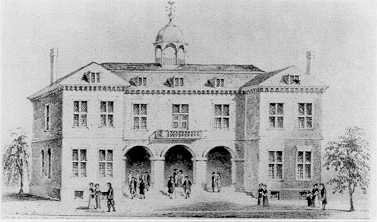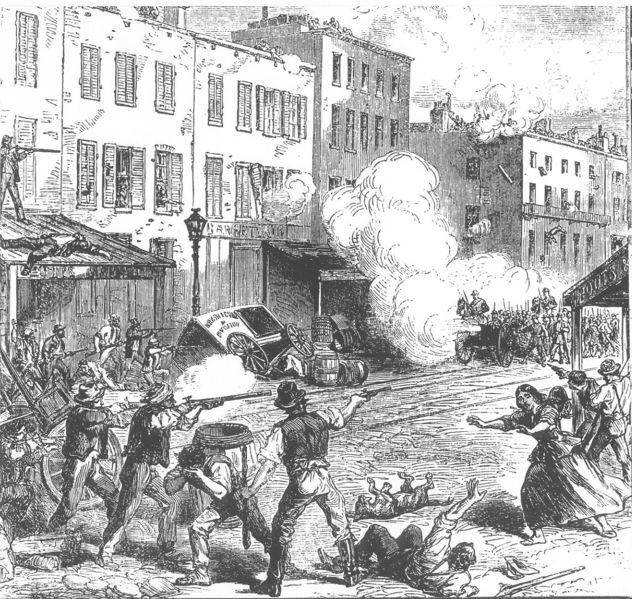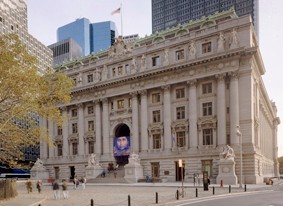Former Fort George of New York - Slave Insurrection of 1741
Introduction
Text-to-speech Audio
Images
City Hall, site of the "Negro Plot" trials of 1741.

Depiction of the Slave Insurrection of 1741

Alexander Hamilton U.S. Custom House, the building which stands where Fort George formerly stood

Backstory and Context
Text-to-speech Audio
In 1741, paranoia concerning slave revolts was running rampant in North and South America as bloody slave revolts occurred in the Caribbean. The problems in the islands may have fueled the conviction among New York City’s white elite that there was a slave revolt being planned by the city’s slaves during that year. While there is no proof that the fire was actually set by slaves, according to virtually every available record, a fire on March 18, 1741, did burn within the walls of Fort George at the personal home and attached church of (then) Lieutenant Governor George Clarke.1 It was not until after the fact that slaves were implicated in the setting of this fire. Following the fire at this location, others were set intentionally or occurred periodically throughout the city, New Jersey, and Long Island. Several white people began making claims that they had heard different slaves bragging about causing the fires, causing the white elite to conclude that all the fires in the city had been intentionally set by gangs and secret societies of Black people.2
Upon the conclusion that the fires were connected to a slave revolt, Daniel Horsmanden, a judge who was appointed to lead the investigation and preside over robbery trials that were seemingly unrelated, was adamant about discovering a sinister plot led by slaves. Therefore, he connected the fires to a previous store burglary, which implicated three slaves named Cuffee, Caesar, and Prince, and an indentured servant named Mary Burton.3 When Burton took the stand (under extreme duress), she testified that the three aforementioned slaves along with a few poor whites conspired to burn Fort George along with the rest of city and murder its inhabitants. She went on to implicate a prostitute named Peggy Kerry who connected many other slaves to the supposed plot, and once in custody, those slaves were forced to implicate other slaves in the supposed plot.2 Eventually, Horsmanden began offering rewards to uncover the plot and roughly 150 people were arrested and either “confessed” or testified against others.1
As a result of the desire to uncover a plot led by slaves, approximately 30 Blacks and 4 whites were executed and roughly 80 other people (mostly Black) were exiled from the region, often to the Caribbean.1 The building that was set on fire within Fort George in 1741 burned to the ground, and the rest of the fort was destroyed during the American Revolution. The building that stands in its place today, the Alexander Hamilton U.S. Custom House, was built between 1902 and 1907.4
Cite This Entry
Bosworth, Lynn and R. Sarah Carson. "Former Fort George of New York - Slave Insurrection of 1741." Clio: Your Guide to History. April 15, 2017. Accessed April 1, 2025. https://theclio.com/tour/1872/17

